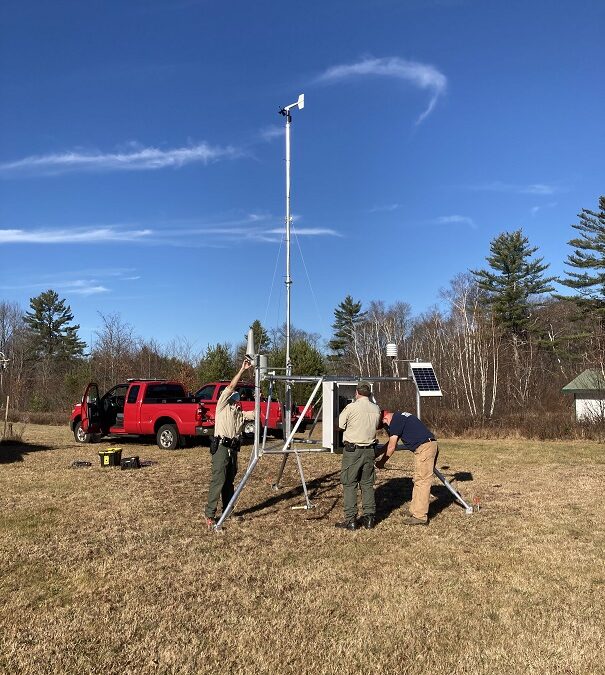A solar-powered weather station has been turned on in the North Country that is focused more on the ground than the air, with the goal of helping to spot and prevent wildfires.
Like many automated weather facilities the RAWS, or Remote Automated Weather Station, at the Warren Fish Hatchery records air temperature, wind speed and precipitation, data that is uploaded via satellite every hour.
But RAWS also measures relative humidity, solar radiation levels and, most unusually, temperature and moisture content of wood lying on the ground, which can become fuel for a wildfire.
The latter measurements are made with a fuel stick sensor. That device has a thermistor, an electronic resistor that measures temperature, and a capacitor that measures moisture placed inside a wooden dowel, which approximates the effect of conditions on woody debris.
This data is used to monitor and calculate daily wildfire danger.
The Warren station is the fourth permanent RAWS installed in New Hampshire, with a portable weather station also being used. They form a network that monitors daily wildfire danger factors from the North Country to the Monadnock Region to the Seacoast. It was installed by the state Division of Forests and Lands and Department of Fish and Game.
The White Mountain National Forest will use the information when conducting prescribed fires and will help with maintenance costs, the state Division of Forests and Lands said in a press release.
The N.H. Division of Forests and Lands used money awarded through an Emergency Management Performance Grant from the N.H. Division of Homeland Security and Emergency Management.
“The funding provided by this grant from New Hampshire Homeland Security and Emergency Management has increased emergency preparedness in our state by providing an additional tool for preventing a potential wildfire incident in the White Mountains Region,” said Patrick Hackley, director of the N.H. Division of Forests and Lands.
New Hampshire experiences about 250 wildland fires each year, which burn an average of 250 acres. Another 200 to 300 illegal fires occur each year that are extinguished before they get out of control.
Ninety percent of wildfires in New Hampshire result from human causes, according to the state.
The weather data from all five RAWS in the state is available online by visiting mesowest.utah.edu and clicking on New Hampshire on the map.


 Return to the Concord Monitor
Return to the Concord Monitor